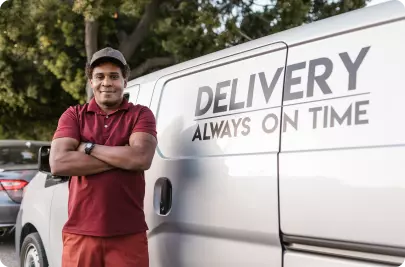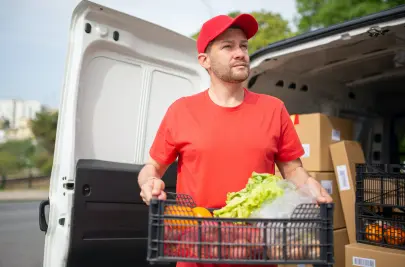
This story originally appeared in Brewer's Journal.
The COVID-19 global pandemic threw every small business on the planet a curveball, and craft breweries were not immune.
Many breweries were forced to close their retail locations and every one of them suffered from drastically reduced demand due to shuttered restaurants and bars. This kind of unprecedented event is not something we can plan for, but it is something that tests us as business owners and entrepreneurs. It forces us to think outside the box, to be flexible and agile, and to move quickly to seize new opportunities.
Over the last year, we’ve been working with more than a hundred craft breweries across North America, helping them pivot their operation to start up or scale up home delivery. It’s been incredibly rewarding to see businesses succeed in this endeavour.
Today, as a second wave is upon us, there remains a big business opportunity for craft breweries to continue doing home deliveries and even make it a permanent, and profitable part of their overall business strategy.
Home Delivery is here to stay
COVID-19 caused an unprecedented demand in home delivery, and this trend is here to stay according to a recent McKinsey report.
Nevertheless, the competition amongst craft breweries that offer home delivery services is fierce. Breweries need to be especially careful in monitoring the costs associated with managing a delivery service, and potential inefficiencies in their supply chain methodologies if they intend to stay in the game.
In this article, I’ll share a few tactics that can help craft breweries with little to no “last-mile” experience operate a sustainable and even profitable home delivery business in a post-pandemic world.
Mini Case Studies: Breweries Get Crafty
Here are just a few examples of businesses we work with that were quick to pivot when COVID-19 hit. The speed and flexibility these entrepreneurs demonstrated allowed them to turn a bad thing into a business opportunity pretty much overnight.
Bridge Brewing

Vancouver, B.C., Canada — When COVID-19 hit, Bridge Brewing made a quick pivot: they trained their sales reps to become home delivery drivers. Bridge Brewing was already using Routific’s route planning software to plan and optimize routes for their sales team as they visited restaurants and bars to sell their craft beers. Today, even as restaurants and bars have reopened, they are continuing to leverage Routific so their delivery drivers can deliver beer and food to households across Vancouver and the surrounding areas.
Reverend Nat’s Hard Cider
%252520(1)-1.png)
Portland, Oregon, USA — Nat West is in the business of making hard cider, but he was forced to close his public taproom when COVID-19 hit. He started an online shop, signed up for Routific, and within a few days, he had a home delivery business up and running. Nat plans to continue doing home deliveries even as his local economy re-opens. Today, he’s able to make more than 240 home deliveries a day, with 90% same-day fulfillment thanks to Routific’s software.
Your Private Bar

Des Moines, Idaho, USA — Business went down to zero for Your Private Bar, a mobile bar and bartending service, when COVID-19 hit. Owner Amber Cooper quickly pivoted to first deliver wine gift baskets to people’s homes. Later, she created an online store via Shopify where she sold a variety of spirits, including craft beer from Confluence Brewing. She used Routific to plan and optimize her deliveries, and the business very quickly scaled from 0 sales to 200 orders.
OK, so what is this “last-mile”?
Today’s consumer wants their deliveries to arrive as soon as possible. Last-mile delivery is the act of getting a product from the closest hub or warehouse to its final destination, which includes both businesses and private homes.
Managing the last mile can be costly, accounting for up to one-third of the total cost of a product, according to a report from Business Insider. In some cases, it can account for more than half of overall shipping costs. It can also be the most inefficient part of the entire delivery process, and can make the difference between a profitable venture or a money-losing business.
Craft Brewers: How to run a profitable home delivery business
So, if you’re convinced how important managing your last mile is, let’s move onto some tips to help you get that delivery business up and running.
- Plan your routes wisely
- Show customers you care
- Monitor your cost per delivery
After you’ve set up your online shop, and orders start rolling in, how do you plan your delivery routes?
Everyone wants to plan “organized” and “efficient” delivery routes, but that’s really a subjective term, isn’t it? So here’s something indisputable: You want to make sure your routes are the most cost-effective for your business.
How do you go about doing that?
Many people think Google Maps can help you do this, but that's not quite right. Google Maps is amazing at helping people find the shortest distance or fastest time from one point to another.
But when it comes to planning delivery routes for a business, the key to efficient route planning is to sequence orders so you deliver as many goods as possible in the least amount of time. If you have multiple drivers, you'll need to decide how to split the routes in the most efficient way.
Poorly planned routes – or worse, not planned at all – can lead to a lot of wasted drive time and fuel, resulting in extremely thin margins and potentially even a money-losing business. It’s really important to keep this in mind.
Here's an image to illustrate the importance of good route planning:
.png)
If your delivery business is just starting out, and you have just a handful of orders, Google Maps is your best bet. It’s free and easy to use. Just note that you’ll need to plot the addresses into the software, and then manually move the stops around until it looks like you have the most efficient route.
When you get to about 25 orders in a day, that’s when you might consider trying route optimization software. Route optimization software can help you sequence a large number of stops in the optimal order, and account for a range of complexities like delivery time windows, vehicle capacities and driver schedules.
Phillips Brewing & Malting Co. uses route optimization software daily to help their drivers spend less time on the road, and more time “servicing the account” – building relationships with their partners and consumers, and making sure people are happy with their products.
“Route optimization software has eliminated the morning chaos we used to have,” said Dennis Slater, logistics manager at Phillips. “There’s no more guesswork. We’re able to route multiple trucks easily, with great visibility. And we can share the daily routes with other internal teams easily.”
Manual route planning is an epic waste of time and resources, and you don’t want to be left scrambling when your delivery business gains some traction. If you feel reluctant about having to adopt yet another piece of software, I can assure you that you'll have a big return on your time investment right away. Good route optimization software should only take roughly 30 minutes to set up (depending on your familiarity with software in general) and will result in immediate ROI.
Now that you've created the perfect route plan, it needs to be executed. If you're starting off with your first delivery runs, I would recommend that you do the deliveries yourself. This way you get to experience what it's like, and when you hire and train drivers, you'll know what to teach them.
After a few rounds of deliveries, and the order volumes are growing beyond your ability to handle by yourself, it would make sense to hire delivery drivers or get external contractors to help you out. A lot of breweries have signed up with third-party delivery companies like Skip the Dishes and DoorDash. It’s convenient to do this because these companies already have their delivery logistics – plenty of drivers waiting in the wings – and the technology – easy-to-use apps – figured out. All you have to do is sign up to be a partner, really.
But these online ordering platforms take a hefty commission; as much as 20% in some cases. And you’re losing out on the chance to connect with your customers as a brand. Remember: the delivery experience is also an opportunity to add a personal touch to really go the extra mile.
Beer Van is a collective of seven family-owned Vancouver craft breweries and beverage producers that banded together to form a delivery service during COVID-19. The service allows customers to place orders from different breweries, and everything is delivered at once.
Beer Van trained brewery employees who would otherwise be out of work to be their delivery drivers. And what makes their delivery service special is how much those new delivery drivers pay attention to special delivery instructions left by customers.
In one recent delivery, the Beer Van delivery driver was able to wish someone a happy birthday upon dropping off their beers. Another driver made sure to slow down to 5 km/h on a small residential street, just as the customer had asked, to watch for young children in the area.
Those little gestures really go a long way.
Lastly, let’s talk a bit about dollars and cents. How much does it cost you to fulfill each delivery order?
After your first month of running your delivery operation, you should know the answer to that question. I assume that you're already familiar with the concept of calculating gross margins, but don't ignore or underestimate the cost of fulfilling your order and making the delivery. Your production cost aside, your cost per delivery is often the largest cost driver in your unit economics.
It’s also one you can improve upon significantly by paying attention to something called your route density. To calculate your route density, you’ll need to ask yourself the following questions:
- Delivery volume: How many orders do I need to deliver per day?
- Delivery area: What geographic areas do I deliver to?
- Delivery days: What days of the week do I offer home delivery?
- Delivery time windows: What time of the day do I offer home delivery?
Optimizing these four factors will help you run your business more efficiently and profitably.
Frequently Asked Questions
Related articles
Liked this article? See below for more recommended reading!

What is Delivery Management? A Guide to the 6 Pillars

Why Your Delivery Business Needs Route Optimization



